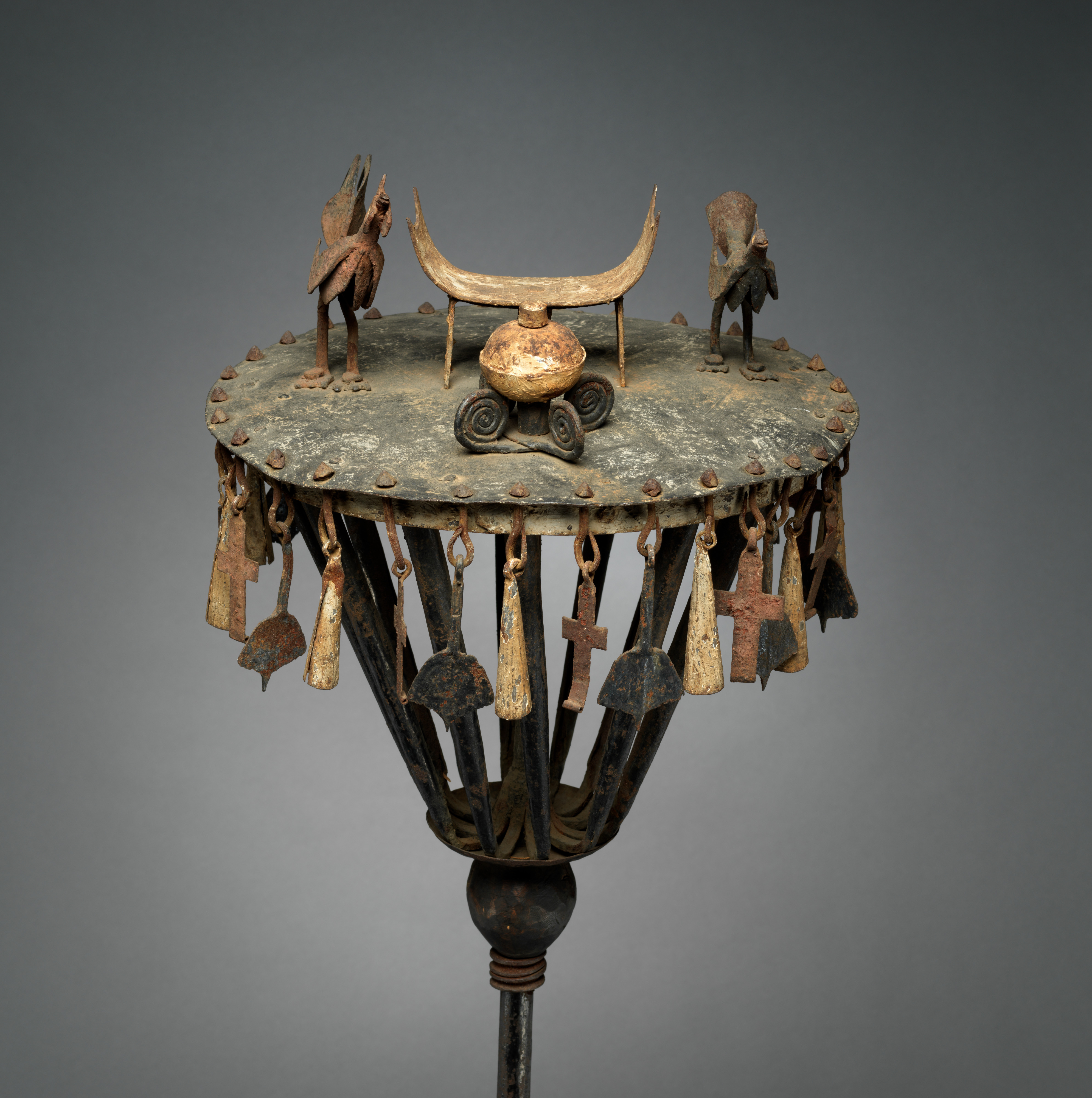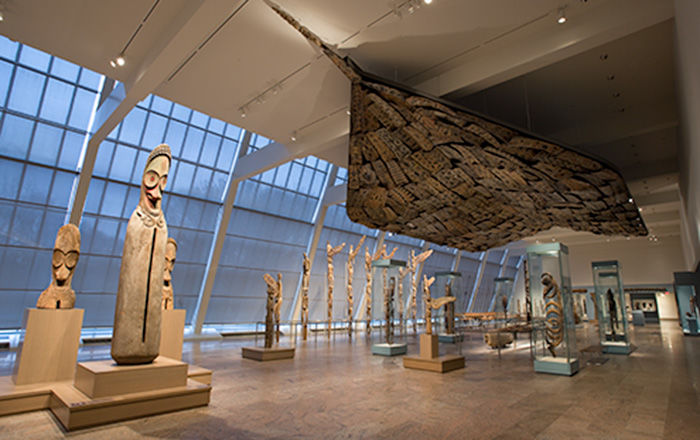Asen (commemorative altar)
This portable altar was commissioned in memory of a prominent individual and planted within their family’s shrine house (asenho). Understood as a site for the living to speak to and engage the dead, an asen required regular ritual offerings to retain its effectiveness. Oral histories date this tradition to the reign of King Agaja (r. 1718–40), who is said to have adapted it from the court of a vanquished opponent. The earliest documented asen were created for Dahomey’s ruling class in the mid- to late nineteenth century. As Fon traders amassed greater wealth and political influence, the port city of Ouidah became a secondary center for the patronage of asen sponsored by an expanding elite class.
The tableau featured at the summit of this asen blends visual and verbal references to the life of a departed family member. An asen’s success was measured by its author’s mastery of both the Fon language and metalworking. The forms that compose this praise poem relate to philosophical thought and spiritual practices. A curved seat indicates that the person may have been a chief or priest. A rooster and a chicken, animals commonly sacrificed in honor of the ancestors, evoke an ideal balance of male and female attributes and the beginning and end of each day. The prominent calabash gourd, used as a receptable during asen-related rites that honor and care for the deceased, represents a schema of cosmic unity. The four spirals forming the calabash’s base reference the four corners of the universe, the cyclical nature of life and death, and the snake deity Dangbe Ayido Hwedo. Togbe (pendants) in the form of crucifixes reflect exchanges with the Christian world and local devotional practices.
This image cannot be enlarged, viewed at full screen, or downloaded.
This artwork is meant to be viewed from right to left. Scroll left to view more.




